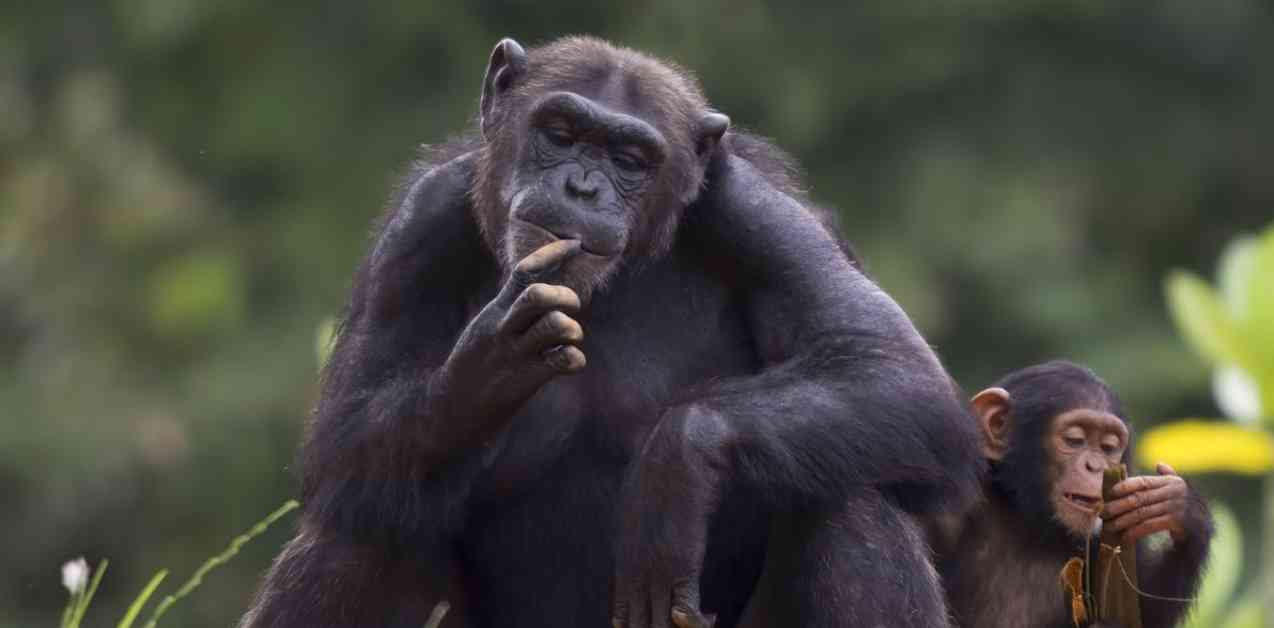Evolutionary Insights: The Unique Shape of the Human Heart
Mammals are a diverse group of animals that have adapted to survive in various environments across the globe. From the largest blue whale to the tiniest shrew, each species has evolved unique traits to thrive in their respective habitats. Scientists have long been fascinated by the adaptability of mammals and the different ways in which they have evolved over time.
For many years, it was believed that the structure and function of the heart were consistent across mammals. However, recent research has uncovered a surprising discovery – the human heart is significantly different from that of our closest relatives, the great apes. This revelation has raised questions about why humans have evolved to have such a unique cardiac structure compared to other primates.
Humans diverged from chimpanzees, our closest evolutionary relatives, between five and six million years ago. During this time, humans underwent significant changes in their anatomy and physiology, including the development of bipedalism and larger brains. These evolutionary adaptations required a greater metabolic demand, leading to the need for increased blood flow to support the body’s increased activity levels and brain size.
To better understand the differences between the human heart and those of great apes, researchers have conducted extensive studies on the cardiovascular systems of various primate species. By using advanced imaging techniques such as cardiac ultrasound, scientists have been able to assess the structure and function of the heart in different species, including chimpanzees, bonobos, orangutans, and gorillas.
One of the key findings of these studies is the unique shape of the human heart compared to that of great apes. While the hearts of great apes contain trabeculations – bundles of muscles arranged in a mesh-like pattern in the left ventricle – the human heart has a smooth wall in this region. This structural difference is particularly pronounced at the bottom of the left ventricle, where the human heart’s smoothness is significantly greater than that of our primate relatives.
In addition to structural differences, researchers have also observed functional differences in the way the human heart contracts and twists during each heartbeat. By using a specialized technique called speckle-tracking echocardiography, scientists have found that the human heart exhibits greater twist and rotation at the apex during contraction compared to great apes. This increased motion allows the human heart to pump a larger volume of blood with each beat, meeting the body’s heightened demands for oxygen and nutrients.
The evolutionary implications of these differences are profound. The human heart has evolved away from the trabeculated structure seen in great apes to enhance its efficiency in pumping blood. This adaptation likely arose in response to the increased physical activity and metabolic demands of humans, as well as the need to support larger brain size.
Subheading: Evolutionary Adaptations of the Human Heart
The unique shape and function of the human heart offer valuable insights into the evolutionary history of our species. The transition from a heavily trabeculated heart to a smoother-walled organ reflects the anatomical changes that accompanied the shift to bipedalism and increased brain size in humans. By adapting to meet the demands of an upright stance and enhanced physical activity, the human heart has undergone significant evolutionary modifications over millions of years.
Subheading: Implications for Human Health
Understanding the evolutionary adaptations of the human heart can also provide valuable insights into modern-day cardiac health. By studying the differences between the human heart and those of great apes, researchers can gain a better understanding of how these structural and functional variations impact cardiovascular function and disease susceptibility in humans.
One of the key findings from recent research is the absence of coronary artery disease in great apes, despite their genetic similarity to humans. Instead, great apes exhibit a fibrotic process in the heart muscle, leading to poor contraction and arrhythmias. This unique cardiac pathology highlights the importance of studying the cardiovascular physiology of diverse species to improve our understanding of heart disease in humans and other primates.
Subheading: Conservation Efforts and Research Impact
In addition to shedding light on the evolution of the human heart, researchers are also conducting vital studies on the cardiovascular health of endangered great apes. Cardiac disease is a leading cause of death in captive primates, yet little is known about the normal cardiovascular physiology of these animals. By collaborating with veterinary practitioners and conducting assessments of great ape hearts, researchers are working towards a better understanding of heart disease in non-human primates.
The International Primate Heart Project is at the forefront of this research, aiming to improve the diagnosis and management of cardiac disease in great apes. By generating essential data on primate cardiovascular physiology, researchers are not only advancing our understanding of human heart evolution but also contributing to the conservation and care of endangered primate species worldwide.
Conclusion:
The unique shape of the human heart offers valuable insights into our evolutionary history and the adaptive changes that have occurred over millions of years. By studying the differences between the human heart and those of great apes, researchers can gain a better understanding of how these structural and functional variations impact cardiovascular function and disease susceptibility in humans. Through ongoing research efforts and conservation initiatives, scientists are working towards a deeper understanding of heart disease in both humans and non-human primates, ultimately leading to improved diagnosis, treatment, and care for all.













